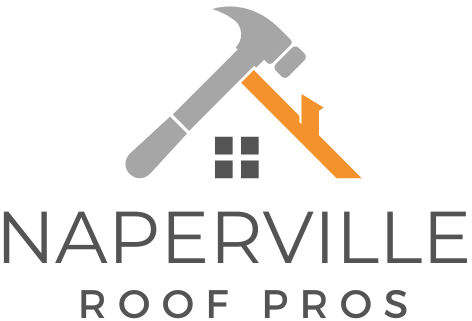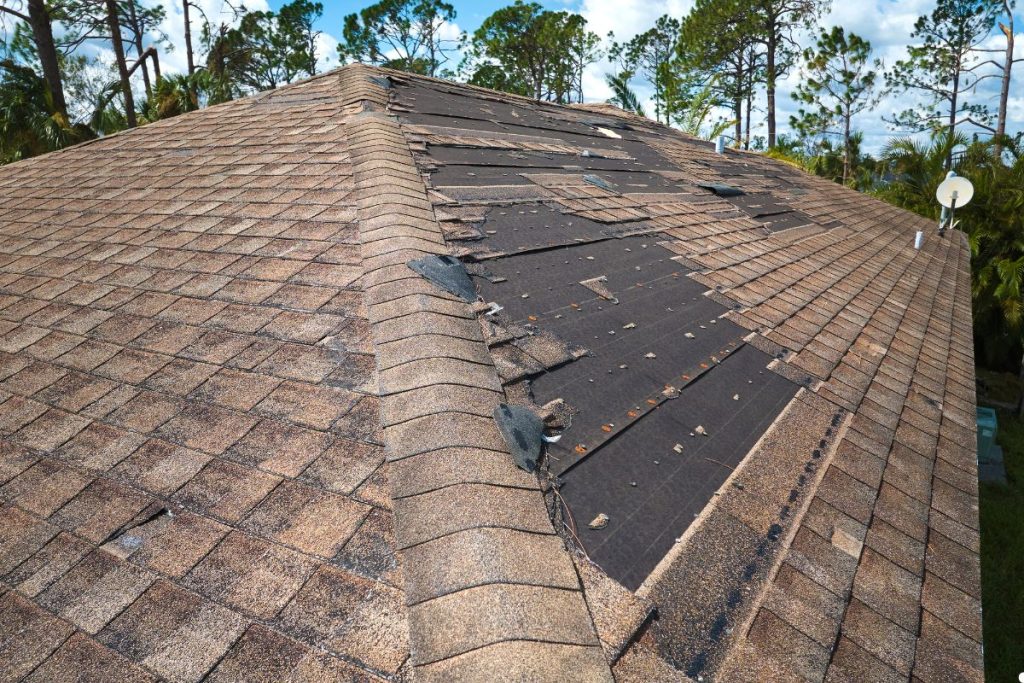
Storms can wreak havoc on your roof, leaving you vulnerable to further damage. This guide provides you with the essential resources, expert advice, and actionable steps to navigate the recovery process, from assessing the damage and finding reputable contractors to filing insurance claims effectively, helping you restore your roof and regain peace of mind. If you need expert assistance, call us today for a consultation! Let’s get started!
Understanding Storm Damage and Your Roof
Storm damage to roofs is a widespread issue across the United States, from hurricanes along the coast to hailstorms in the Midwest. Being prepared and knowing how to react is crucial. Common culprits include high winds that tear off shingles, hail that causes impact damage, heavy rains leading to leaks, and falling trees or branches that create structural problems. Understanding the potential threats in your region is the first step in protecting your home.
Assessing Roof Damage After a Storm
Identifying Common Types of Storm Damage
After a storm passes, carefully assess your roof for signs of damage. This might include:
- Missing shingles: Look for bare spots or displaced shingles.
- Cracked or dented shingles: Hail can cause significant impact damage, even if it’s not immediately obvious.
- Granule loss: Excessive granule loss from asphalt shingles can indicate wear and tear from hail or wind.
- Water stains on ceilings: These indicate a leak, which could stem from roof damage.
- Sagging roof: A sagging roofing is a serious sign of structural damage and requires immediate attention.
- Damaged flashing: Check around chimneys, vents, and skylights for damaged or missing flashing.
Safety First: Never climb on your roof to inspect it yourself unless you are experienced and have the proper safety equipment. Binoculars can be helpful for inspecting the roof from the ground.
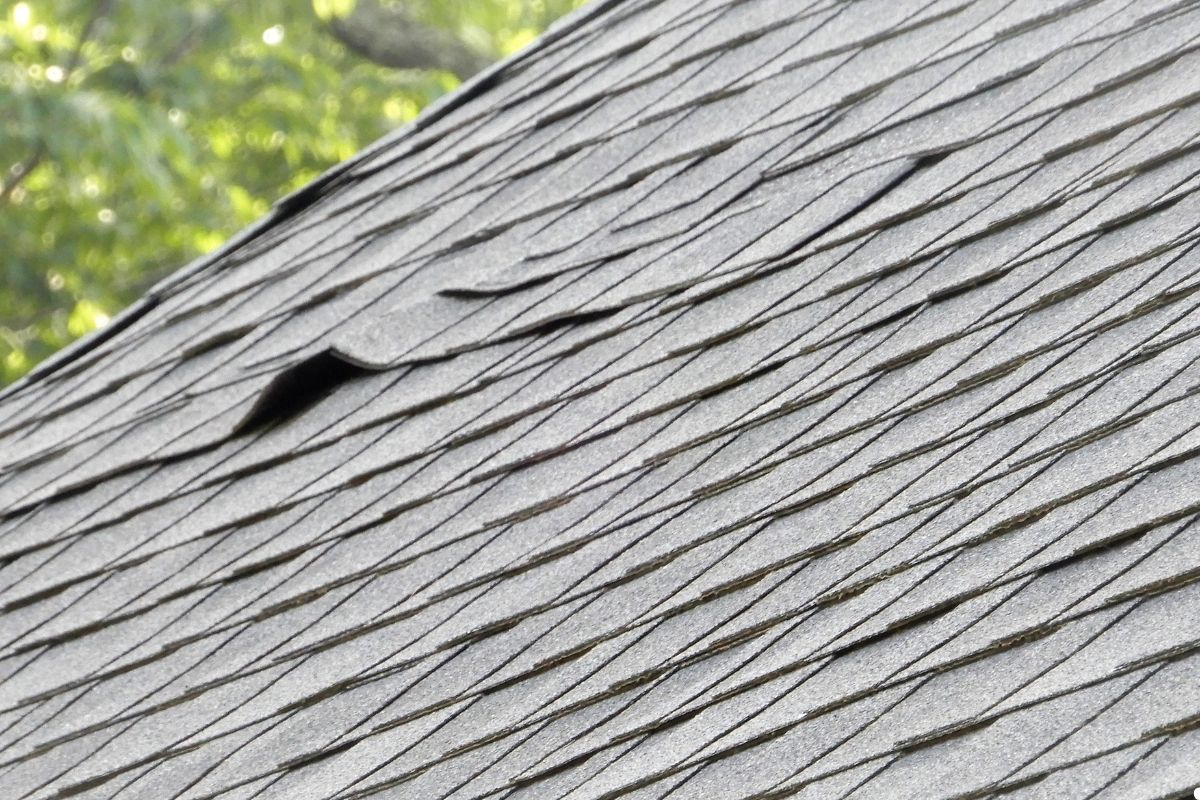
Signs You Need a Professional Inspection
While you can identify some damage yourself, a professional roof inspection is essential for a thorough assessment. Call a qualified roofing contractor if you notice:
- Extensive damage, such as a large number of missing or damaged shingles.
- Signs of structural damage, like a sagging roof.
- You are uncomfortable or unable to safely inspect the roof yourself.
- You suspect hidden damage, such as leaks or damage under the shingles.
A professional roofer has the experience and equipment to safely and accurately assess the extent of the damage and provide a detailed report for your insurance company.
Finding a Reputable Roofing Contractor
Choosing the Right Roofing Contractor
Selecting the right roofing contractor is crucial for a successful repair or replacement. A qualified contractor will ensure the job is done correctly, safely, and in compliance with local building codes. Look for a company with a solid reputation, experience in storm damage repair, and proper licensing and insurance.
Consider asking neighbors, friends, or family for recommendations. Online review sites can also provide valuable insights into a contractor’s reputation and quality of work.
Checking Credentials and Reviews
Before hiring a roofing contractor, always verify their credentials:
- License: Ensure the contractor is licensed to operate in your state or local area.
- Insurance: Verify that the contractor has both liability and worker’s compensation insurance. This protects you from liability if someone is injured on your property during the repairs.
- Reviews: Read online reviews and check the contractor’s rating with the Better Business Bureau (BBB).
Getting Multiple Quotes
Obtain quotes from at least three different roofing contractors. This will give you a better understanding of the average cost for the repair or replacement and allow you to compare services and warranties. Be wary of contractors who offer extremely low bids, as this could indicate subpar materials or workmanship. Ask for a detailed breakdown of the costs, including materials, labor, and any additional fees.
Navigating the Insurance Claim Process
Filing a Storm Damage Insurance Claim
Filing an insurance claim can seem daunting, but following these steps will help streamline the process:
- Contact your insurance company: Report the damage as soon as possible after the storm.
- Document the damage: Take photos and videos of the damage before making any repairs.
- Prevent further damage: Take steps to protect your home from further damage, such as covering leaks with tarps.
- Schedule an inspection: Your insurance company will send an adjuster to inspect the damage.
- Obtain estimates: Get estimates from multiple roofing contractors for the repair or replacement.
- Review the settlement offer: Carefully review the insurance company’s settlement offer and ensure it covers the full cost of the repairs.
Documenting the Damage
Thorough documentation is critical to a successful insurance claim. Take clear, detailed photos and videos of all damaged areas, including:
- The overall condition of the roof
- Missing or damaged shingles
- Cracks and dents
- Water stains on ceilings
- Damaged gutters and downspouts
These photos will serve as evidence of the extent of the damage and help support your claim.
Working with Your Insurance Adjuster
The insurance adjuster will assess the damage and determine the amount of coverage you are entitled to. Be prepared to:
- Provide them with copies of your photos and estimates.
- Answer their questions honestly and accurately.
- Be present during the inspection, if possible.
- Don’t be afraid to ask questions if you don’t understand something.
If you disagree with the adjuster’s assessment, you have the right to appeal their decision. Consider hiring a public adjuster to represent your interests.
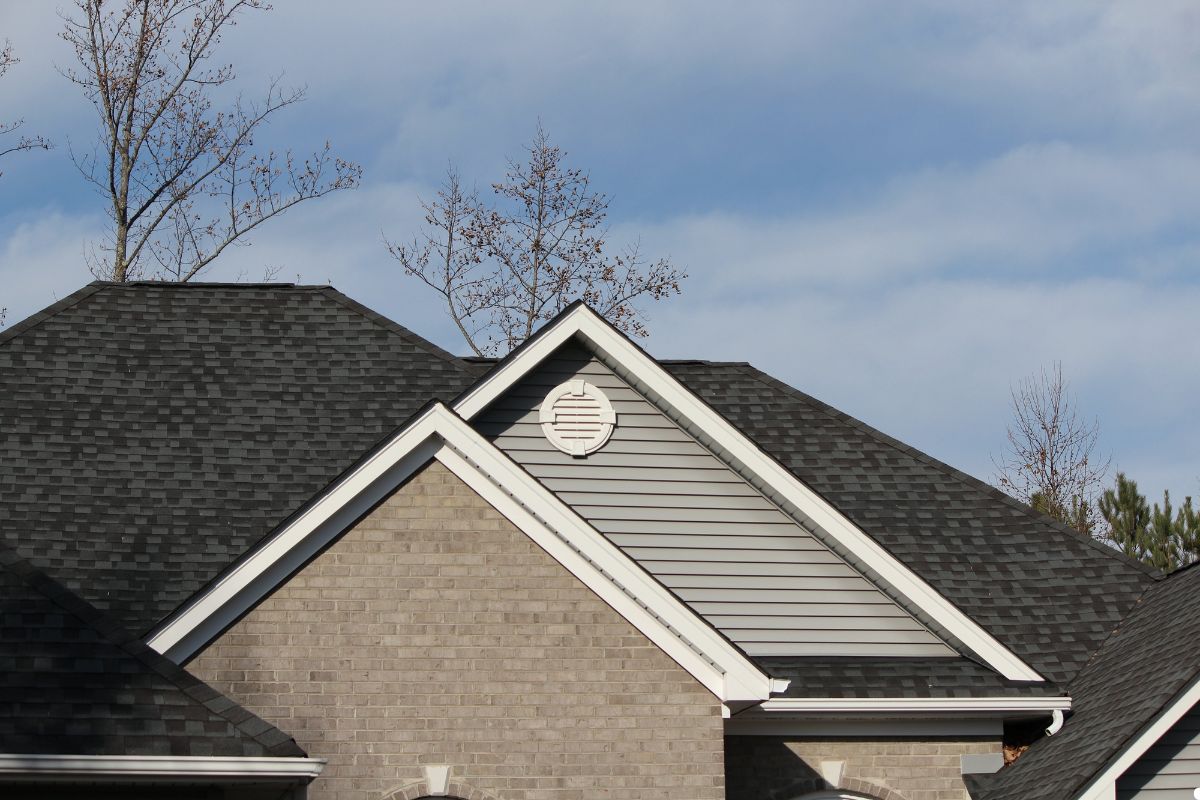
Temporary Roof Repair and Prevention
Protecting Your Home After the Storm
After a storm, it’s essential to take steps to protect your home from further damage, even before permanent repairs can be made. Covering damaged areas with tarps is a common temporary solution to prevent leaks. Remove debris from gutters and downspouts to ensure proper drainage. Address any immediate safety hazards, such as fallen trees or exposed electrical wires.
Long-Term Prevention Strategies
To minimize the risk of future roof storm damage, consider these long-term prevention strategies:
- Regular roof inspections: Schedule regular roof inspections to identify and address potential problems early on.
- Maintain trees: Trim trees and shrubs that are close to your roof to prevent branches from falling during storms.
- Upgrade roofing materials: Consider upgrading to more durable roofing materials that are resistant to wind and hail.
- Ensure proper drainage: Keep your gutters and downspouts clean and in good repair to prevent water damage.
Frequently Asked Questions (FAQs)
How soon after a storm should I inspect my roof?
Inspect your roof as soon as it is safe to do so after the storm has passed. Early detection of damage can prevent further issues. Don’t wait for small damage to become a big problem! Contact us today for a thorough roof inspection.
Will my homeowner’s insurance cover storm damage to my roof?
Most homeowner’s insurance policies cover storm damage to roofs, but the specifics of your coverage will depend on your policy. Review your policy and contact your insurance company for clarification.
Can I repair my roof myself after a storm?
While some minor repairs may be possible for experienced homeowners, it is generally recommended to hire a professional roofing contractor for storm damage repairs. This ensures the job is done correctly and safely.
Staying Safe and Secure After a Storm
Recovering from storm damage to your roof can be a challenging process, but by following these resources, prioritizing safety, working with reputable contractors, and navigating the insurance process effectively, you can restore your roof and regain peace of mind. Remember to call us for any of your roofing needs.
